The rocky intertidal is coming into its full summer glory right now. The early morning low tides have been spectacular in May, and they’ll get better for the remaining few days of the month. This morning I went out to Franklin Point to poke around. Low tide was -1.8 feet (yippee!) at 06:13. And for once the swell was also down, so the ocean seemed very far away from the mid-tidal zone. See?
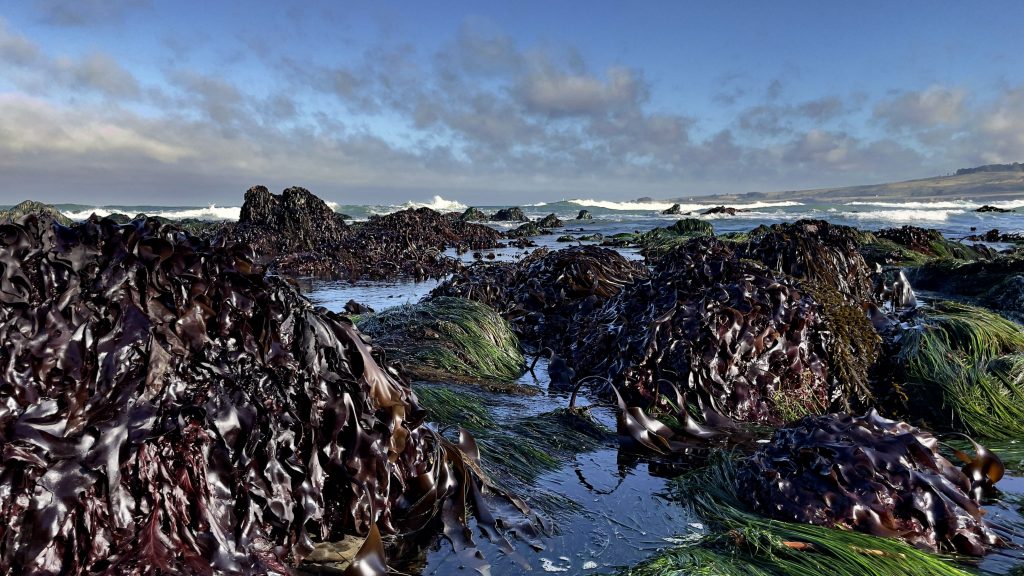
2021-05-27
© Allison J. Gong
One thing that’s nice about Franklin Point is that despite its exposure, especially on the north side of the point, all those boulders provide a lot of protection from the incoming waves. It’s amazing how they serve to dissipate the water’s energy. Of course, that doesn’t prevent the inevitable rise of water in the pools, but at least when it arrives it just floods boots instead of knocking down a distracted marine biologist.
Here’s a 20-second video I shot from the same spot.
Just as in any terrestrial habitat, summer is when the photosynthetic organisms come to dominate the rocky intertidal. Even a cursory glance shows that every surface is covered with algae and/or surfgrass. So why not showcase some of these organisms when they look their best?
In terms of biomass, Egregia is by far the most abundant alga along our intertidal coast. Individual fronds can be 5+ meters long, and several fronds arise from each holdfast. Higher up in the mid tidal zone the Egregia was forming curtains hanging down along vertical faces.
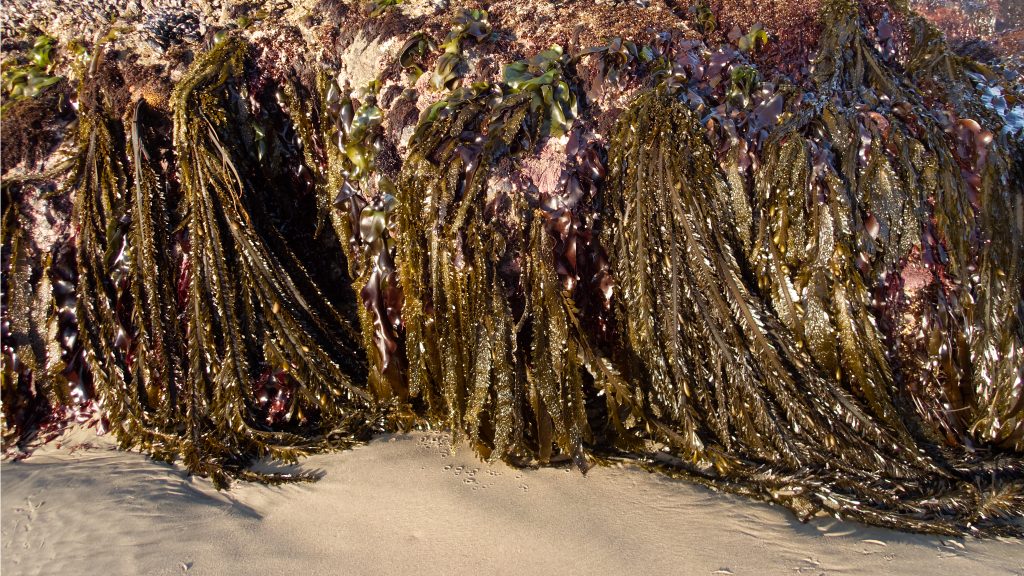
2021-05-27
© Allison J. Gong
But Egregia does know how to share the spotlight. Here it is posing with a couple of other low tidal denizens:
That’s Egregia on the left, of course. One of the laminarian kelps, Laminaria setchellii, is taking center stage in this shot. When it lives in the subtidal Laminaria setchellii is an understory kelp; it gets to about 1.5 meters tall and can form dense stands. In this species each holdfast gives rise to a single stipe that in turn opens into a wide blade that is deeply divided, as you can see. The surfgrass Phyllospadix torreyi is on the right. There is a lot of surfgrass in the rocky intertidal these days. It’s pretty treacherous stuff, too. It’s very slippery and likes to cover pools that are deeper than you’d expect. I’ve learned the hard way that it cannot be trusted at all.
My favorite seaweeds are always the reds. And my favorite of the reds is Erythrophyllum delesserioides, looking so lush and pretty this time of year. It is a low intertidal species, and can be locally abundant. Some years it seems to get beat up and look ratty, but this year it looks great. Here it is, surrounding a couple of Laminaria setchellii.
Here’s a grouping of Erythrophyllum and some other reds. I can see two species of Mazzaella, and of course there are Egregia and Phyllospadix mingled together on the right. So pretty!
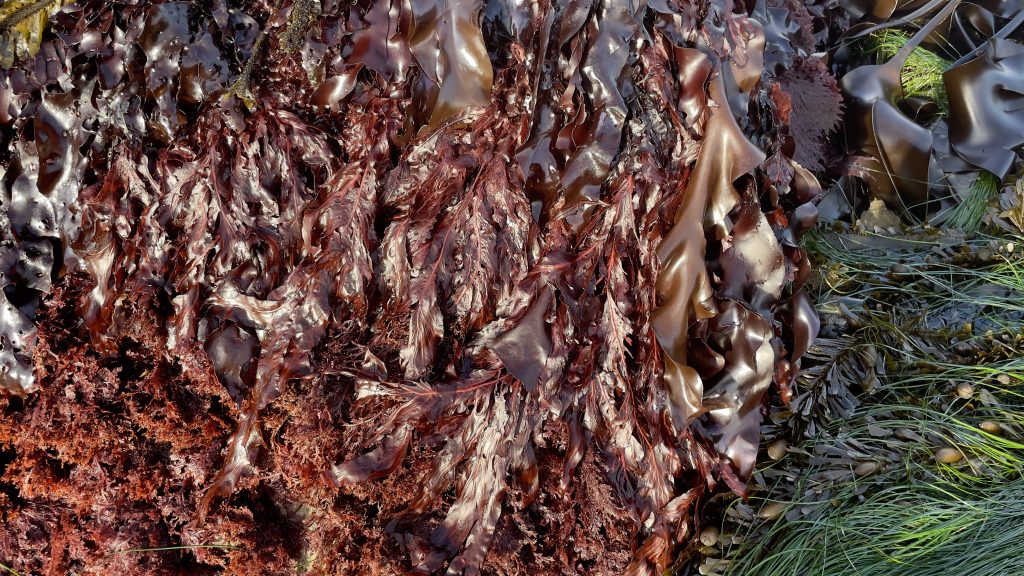
2021-05-27
© Allison J. Gong
When the tide is as low as it was this morning, a marine biologist has a lot of time to explore. I had just about exhausted the batteries in both my camera and my phone and was getting uncomfortably cold when I decided to head in. On the way back I stopped to take a look at the rockweeds, which live in the high intertidal. Franklin Point isn’t a hotspot for rockweed abundance or diversity, but I did see this nice thallus of Fucus.
Fucus is the seaweed with the bifurcated branch tips. The tips are starting to swell up, which means this thallus is getting ready to spawn. Of all the algae, rockweeds are unusual in that they have what phycologists call an “animal-like” life cycle. They don’t have sporophytes or gametophytes. They just have bodies, or thalli. Some thalli are female and some are male. Instead of releasing multiple kinds of spores and whatnot, they release eggs and sperm. The resulting zygote develops as you would expect, only instead of forming a young animal it grows into a baby seaweed.
I do love that olive green color of the rockweeds, which belong to the phylum of brown algae (Ochrophyta). Notice that there’s a bit of similarly colored sheetlike seaweed right below the Fucus. That seaweed has the same color, but is in the red algae (Phylum Rhodophyta). Once again, we are reminded that the algae cannot be reliably sorted into phyla based solely on color. Mother Nature can be very tricksy!
So there you have it, my trip report for this morning’s excursion to Franklin Point. The tides are excellent for the next several days, and I will be out there for most of them. This is my favorite time of the year.
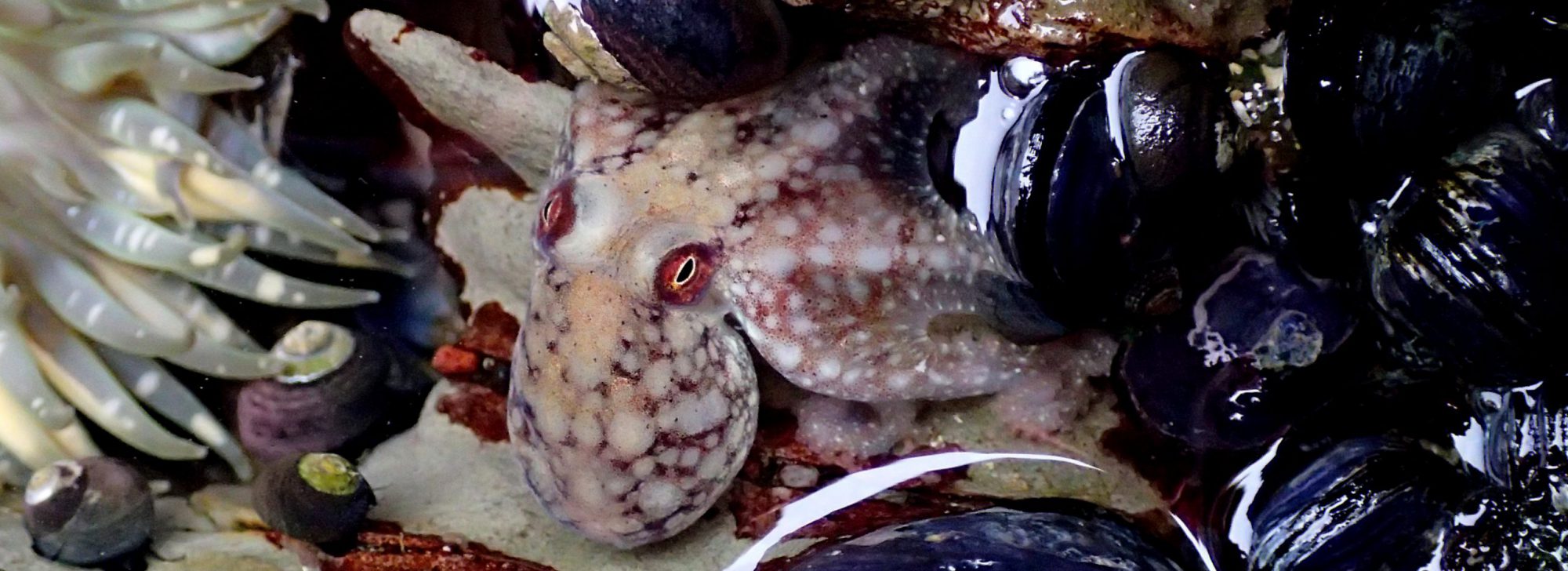
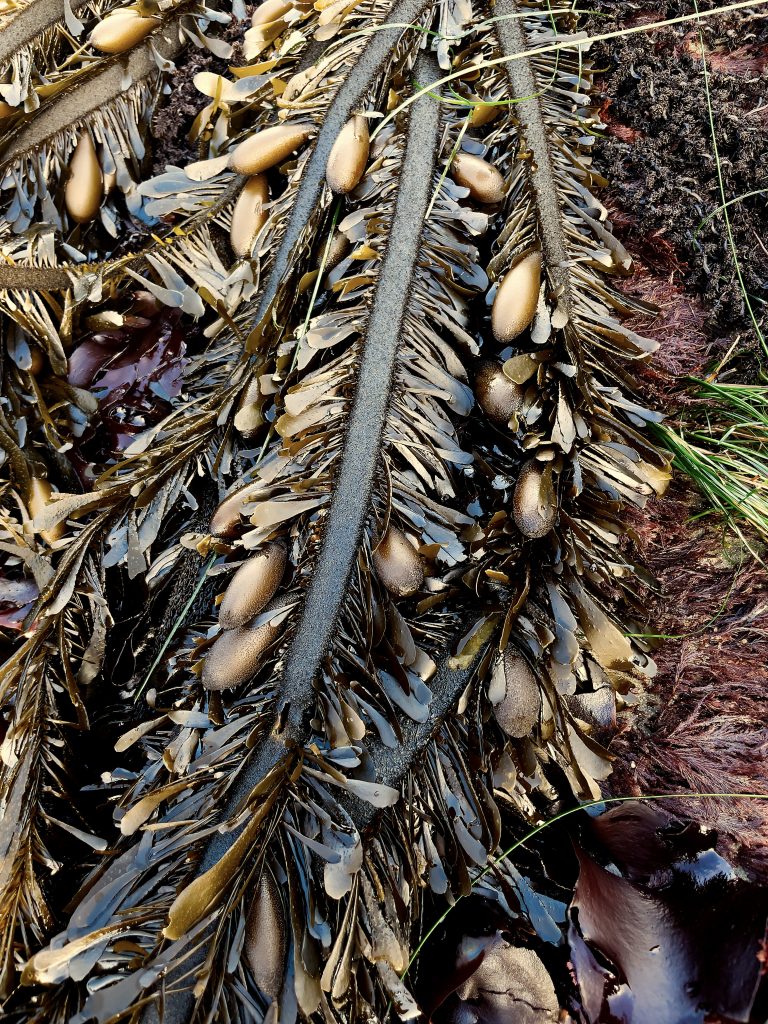
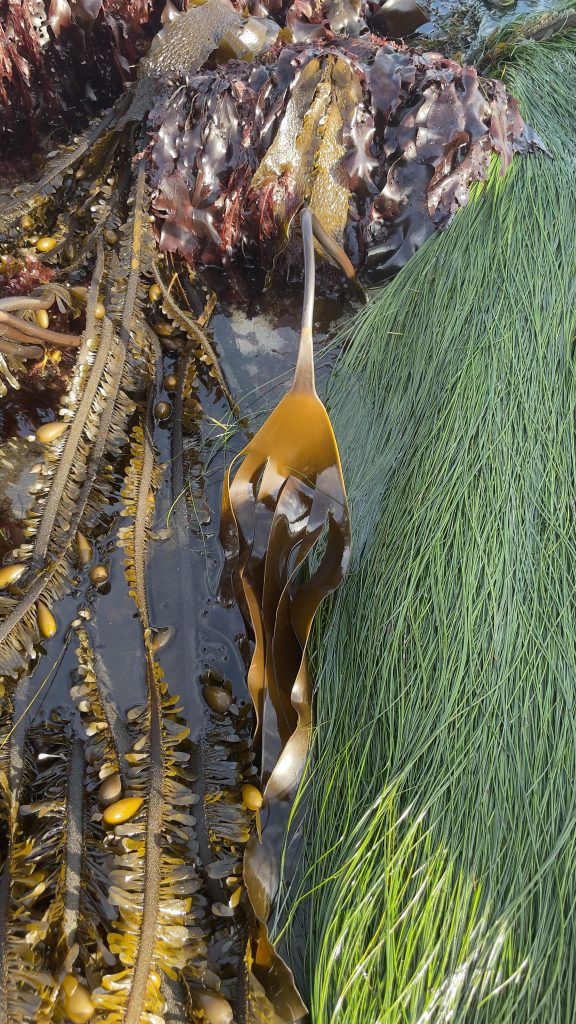


Hugely educational. I’m glad I was sent your blog. Hope to join you soon out in the intertidal zone.